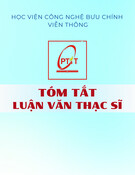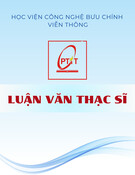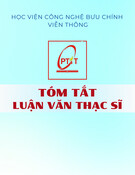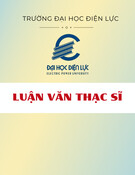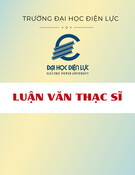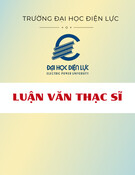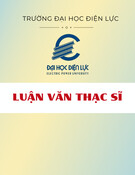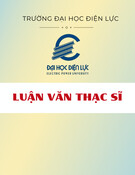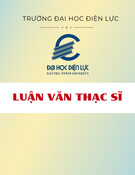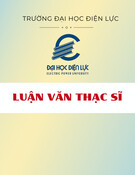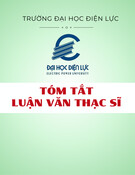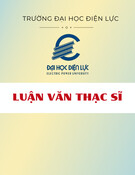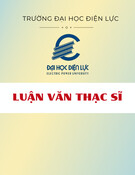
!!!!!!!
MINISTRY(OF(EDUCATION(AND(TRAINING( ( (MINISTRY(OF(PUBLIC(HEALTH((
HANOI(MEDICAL(UNIVERSITY(
!
NGUYEN(THI(TO(UYEN(
(
(
EVALUATION(OF(RESULTS(OF(ENDOSCOPIC(
TRANSCANAL(CANAL(WALL(DOWN(
MASTOIDECTOMY(FOR(DANGEROUS(
CHRONIC(OTITIS(MEDIA((
!
!
Specialization:!Ear!Nose!Throat!
Code:!62720155!
!
SUMMARY(OF(MEDICAL(DOCTORAL(THESIS(
(
!!!!
HA(NOI(–(2018!!!!!

The work is completed at:
HANOI MEDICAL UNIVERSITY
Instructor: Assoc. Prof. PhD. NGUYEN TAN PHONG
Reviewer 1: Assoc. Prof. PhD. NGHIEM HUU THUAN
Vietnam Military Medical Academy
Reviewer 2: Assoc. Prof. PhD. NGUYEN THI NGOC DUNG
Pham Ngoc Thach University of Medicine
Reviewer 3: Assoc. Prof. PhD. ĐOAN HONG HOA
National Otorhinolaryngology Hospital of Vietnam
The Thesis will be protected at the Thesis-level dissertation board:
Hanoi Medical University
At: h month date year
Can find thesis at:
National Library
Hanoi Medical University Library
Central Medical Information Library

THE PUBLISHED RESEARCH WORKS
RELATED TO THE THESIS TOPIC
1. Nguyễn Thị Tố Uyên, Nguyễn Tấn Phong (2012), Kết quả ban
đầu của phẫu thuật tiệt căn xương chũm tối thiểu đường xuyên
ống tai, Tạp chí Nghiên cứu Y học, số 78 (1), tr 48-52.
2. Nguyễn Thị Tố Uyên, Nguyễn Tấn Phong (2013), Kết quả
phẫu thuật tiệt căn xương chũm tối thiểu đường xuyên ống tai,
Tạp chí Nghiên cứu Y học, số 82 (2), tr 64-71.
3. Nguyễn Thị Tố Uyên, Lương Hồng Châu, Nguyễn Tấn Phong
(2017), Triệu chứng cơ năng của viêm tai giữa mạn tính nguy
hiểm được phẫu thuật nội soi tiệt căn xương chũm đường xuyên
ống tai, Tạp chí Tai Mũi Họng Việt Nam, Volume (62-37), N° 3, tr
78-83.
4. Nguyễn Thị Tố Uyên, Nguyễn Tấn Phong, Đoàn Thị Hồng
Hoa, Lê Công Định (2018), Hình ảnh khám nội soi của viêm tai
giữa mạn tính nguy hiểm được phẫu thuật nội soi tiệt căn xương
chũm đường xuyên ống tai, Tạp chí Y học Việt Nam, tập 462, số 1,
tr 161-164.
5. Nguyễn Thị Tố Uyên, Nguyễn Tấn Phong, Cao Minh Thành,
Lê Văn Khảng (2018), Đặc điểm ăn mòn xương trên phim cắt lớp
vi tính của viêm tai giữa mạn tính nguy hiểm được phẫu thuật nội
soi tiệt căn xương chũm đường xuyên ống tai, Tạp chí Y Dược học
Quân sự, vol 43, số 4, tháng 4, tr 126-131.

1
QUESTION
Chronic otitis media (COM) is an inflammation that lasts more than
3 months in the middle ear. According to the WHO, COM rate ranges
from 1% to 4% depending on the region, Vietnam is 3% to 5%. COM can
be dangerous by erosion of the bones which can cause serious
complications, surgery indication is absolute, our research refers to 2
diseases: cholesteatoma and grade IV retraction porket (uncontrolled or
precholesteatoma).
In the past, patients often come to treatment when lession damage
and invasive enlargement of the mastoid region even during inflammation
stage with serious complications such as meningitis, cerebral abscess ...
Today dangerous COM is early diagnosis when the lesions are small and
discreet; The CT scan of the temporal bone can determined extent of the
lesions (focal or spread), mastoid structure. The change of disease and the
development in diagnosis are motivation for improvement in treatment.
With severe lesions on the sclerosis mastoid, small antre, post-auriculair or
antero-auriculair mastoidectomy made a big and safe mastoid cavity which
is too large for lesions with many disadvantages, on this case, the close
technic mastoidectomy is difficult with high risk of complications and will
be dangerous if patients do not return periodic examination and take the
second look surgery when suspected recurrent cholesteatoma.
Antrotomy transcanal under microscope was reported by Holt J.J in
2008. When compare with post-auriculair and antero-auriculair, the
transcanal is the shortest and direct entrance to antre, and well keeping
propre mastoid cortex. Although the endoscopy (1990) was used on ear
surgery much later than micoscopy (1950), it become the usefull
manipulation for endoral and transcanal entrance thanks for small tip and
wide fild. Nguyen Tan Phong (2009), Tarabachi M. (2010) reported
endoscopy transcanal atticotomy, antrotomy. Nguyen Tan Phong (2010),
Tarabachi M. (2013) continue to down the posterior canal wall for the
endoscopic transcanal canal wall down (ET CWD) mastoidectomy. This
operation is addapted with cholesteatoma or grade IV retraction pocket
base on schlerose mastoid and small antre which made a small size of

2
mastoid cavity but ensure control of disease and drainage, rapid recovery
time, high aesthetics, can improve hearing. To improve the theoretical,
indicative, technical contribution to disseminate surgery in ENT specialist
we carry out the topic: “Evaluation of results of endoscopic transcanal
canal wall down mastoidectomy for dangerous chronic otitis media”
with 2 target:
1. Describe the clinical, subclinical characteristics of patients with
dangerous chronic otitis media.
2. Evaluation of the results of endoscopic transcanal canal wall
down mastoidectomy in patients with chronic otitis media.
THE NEWS CONTRIBUTIONS OF THE THESIS
1. Suggest the indication of ET CWD based on endoscopic exam and
temporal bone CT Scan.
2. Contribute to the scientific reasoning, point out the advantages of ET
CWD, the difficulties and how to overcome when practice.
3. Confirmed success of improving the hearing by tympanoplasty on the
ET CWD at the first surgery.
LAYOUT OF THE THESIS
The thesis includes 132 pages: Question 2 pages; Overview 28
pages; Research subjects and methods 17 pages; Results 37 pages;
Discussion 45 pages; Conclusion 2 pages; Recommendations and new
contributions of the thesis 1 page. There are 28 pictures, 34 tables, 29
charts. There are 106 references: Vietnamese: 21, English: 72, French: 13.
CHAPTER 1: STUDY OVERVIEW
1.1. Dangerous chronic otitis media:
1.1.1. The concept: Dangerous chronic otitis media is a type of COM
that is invasive, destroys the surrounding bone and is at risk for
complications. Research refers to two prominent diseases are
cholesteatoma and grade IV retraction pocket. Cholesteatoma is a
development of epithelial squamous keratinaze (with epidermal origin) in
the middle ear. The retraction pocket, also known as the local atelectasis,











